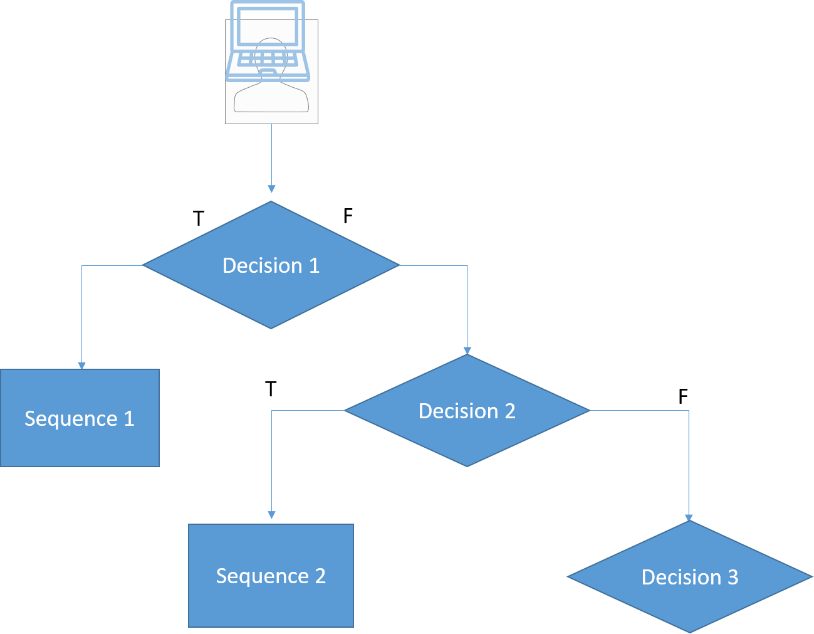
- SAP Community
- Products and Technology
- Technology
- Technology Blogs by SAP
- Predictive Thursdays: Probabilities Rule—The Road ...
Technology Blogs by SAP
Learn how to extend and personalize SAP applications. Follow the SAP technology blog for insights into SAP BTP, ABAP, SAP Analytics Cloud, SAP HANA, and more.
Turn on suggestions
Auto-suggest helps you quickly narrow down your search results by suggesting possible matches as you type.
Showing results for
Advisor
Options
- Subscribe to RSS Feed
- Mark as New
- Mark as Read
- Bookmark
- Subscribe
- Printer Friendly Page
- Report Inappropriate Content
10-20-2016
11:20 AM
 In 2011, in an article in the Wall Street Journal, Marc Andreessen proclaimed that software is eating the world. He argued that a slew of technological innovations including advanced microprocessors and high-speed connectivity will revolutionize traditional business, and that every company should become a software company. Many pundits have subsequently argued that even traditional businesses will need to rethink their business models. Andreessen even went so far as to say that the entire retail vertical will eventually die due to the scalability of companies like Amazon. In short, if you aren’t thinking about how you will disrupt your industry you can bet your competitors are already doing so. If every company needs to reinvent themselves as a software company, what will allow them to differentiate themselves from their competitors?
In 2011, in an article in the Wall Street Journal, Marc Andreessen proclaimed that software is eating the world. He argued that a slew of technological innovations including advanced microprocessors and high-speed connectivity will revolutionize traditional business, and that every company should become a software company. Many pundits have subsequently argued that even traditional businesses will need to rethink their business models. Andreessen even went so far as to say that the entire retail vertical will eventually die due to the scalability of companies like Amazon. In short, if you aren’t thinking about how you will disrupt your industry you can bet your competitors are already doing so. If every company needs to reinvent themselves as a software company, what will allow them to differentiate themselves from their competitors?My point of view is that Machine Learning embedded into software systems is key to next generation disruptive software systems. SAP along with every other large software company is investing heavily in Machine Learning into core products and offerings. The challenges for software companies are substantive, and the whole approach to how you engineer, test, and update software will change.
Traditional Approach
The traditional approach to how one engineers software focuses on humans designing systems that use rules and Boolean logic to solve problems.

Using this traditional approach, a quality assurance (QA) process evolved that tested the software to make sure it was working as designed. Software development organizations know how to design quality testing to ensure software is meeting business and technical requirements. As we enter the age of Simple Artificial Intelligence, the approach to designing and testing software will need to change.
Next Generation Approach
Moving forward, development teams composed of humans will disappear and software will be designed and coded by machine learning algorithms. Instead of humans coming up with ways to solve problems, algorithms will use examples based on data, and code a solution.

While we believe this is inevitable, the approach for how you test and release software built via machine learning is a challenge. Software designed and created via machine learning is probabilistic in nature and not Boolean. One of the primary challenges we will encounter is how do you coherently test systems, which at their heart are probabilistic?
In the old world, it was relatively easy to identify which part of the system was not working properly. In the new world, the probabilistic nature of our code will make safety and risk mitigation a significant challenge. If this is such a challenge, why even try it?
The answer is speed. As decision cycles grow significantly smaller, we’ll need a completely different software development approach based on automation. With the increase in release, cycles from years to hours or minutes will come with risk. Machine Learning will certainly introduce error, but whether it’s the human or an algorithm there is always an inevitable amount of randomness that ensures that we’ll never always get everything right.
In short, the risk of not adopting this next generation approach is that your competitors will, and disrupt you into oblivion.
For more on predictive analytics, read the rest of our Predictive Thursday blogs.
- SAP Managed Tags:
- Machine Learning,
- Data and Analytics,
- SAP Predictive Analytics
Labels:
You must be a registered user to add a comment. If you've already registered, sign in. Otherwise, register and sign in.
Labels in this area
-
ABAP CDS Views - CDC (Change Data Capture)
2 -
AI
1 -
Analyze Workload Data
1 -
BTP
1 -
Business and IT Integration
2 -
Business application stu
1 -
Business Technology Platform
1 -
Business Trends
1,661 -
Business Trends
85 -
CAP
1 -
cf
1 -
Cloud Foundry
1 -
Confluent
1 -
Customer COE Basics and Fundamentals
1 -
Customer COE Latest and Greatest
3 -
Customer Data Browser app
1 -
Data Analysis Tool
1 -
data migration
1 -
data transfer
1 -
Datasphere
2 -
Event Information
1,400 -
Event Information
64 -
Expert
1 -
Expert Insights
178 -
Expert Insights
269 -
General
1 -
Google cloud
1 -
Google Next'24
1 -
Kafka
1 -
Life at SAP
784 -
Life at SAP
10 -
Migrate your Data App
1 -
MTA
1 -
Network Performance Analysis
1 -
NodeJS
1 -
PDF
1 -
POC
1 -
Product Updates
4,578 -
Product Updates
318 -
Replication Flow
1 -
RisewithSAP
1 -
SAP BTP
1 -
SAP BTP Cloud Foundry
1 -
SAP Cloud ALM
1 -
SAP Cloud Application Programming Model
1 -
SAP Datasphere
2 -
SAP S4HANA Cloud
1 -
SAP S4HANA Migration Cockpit
1 -
Technology Updates
6,886 -
Technology Updates
390 -
Workload Fluctuations
1
Related Content
- SAP Datasphere Sparks Innovation: EMEA, MEE and APJ Partners Lead the Way in Technology Blogs by SAP
- Model Compression without Compromising Predictive Accuracy in SAP HANA PAL in Technology Blogs by SAP
- Creating risk prediction tool in SAP Analytics Cloud in Technology Blogs by Members
- A real-world case study: Worker Behavioral Analytics and the “Connected Workforce”, Part 2/3 in Technology Blogs by SAP
- Combining Data Intelligence and HANA Predictive Analytics Library for a simple Covid19 risk calculator in Technology Blogs by SAP
Top kudoed authors
| User | Count |
|---|---|
| 11 | |
| 11 | |
| 10 | |
| 9 | |
| 9 | |
| 9 | |
| 9 | |
| 8 | |
| 7 | |
| 7 |